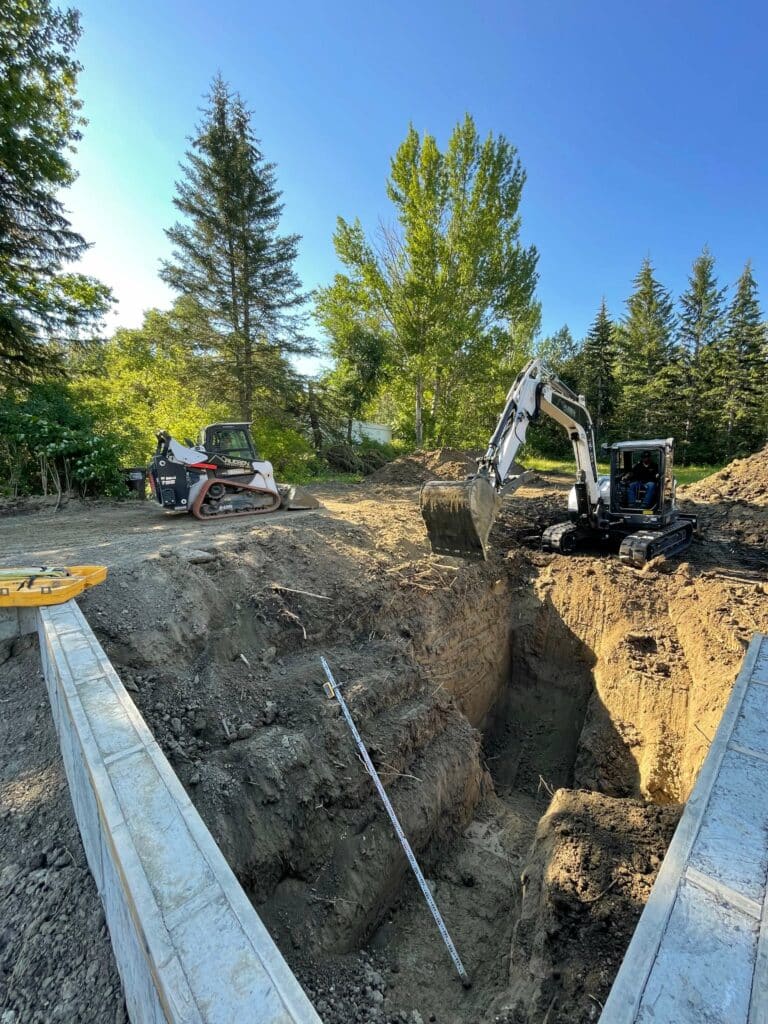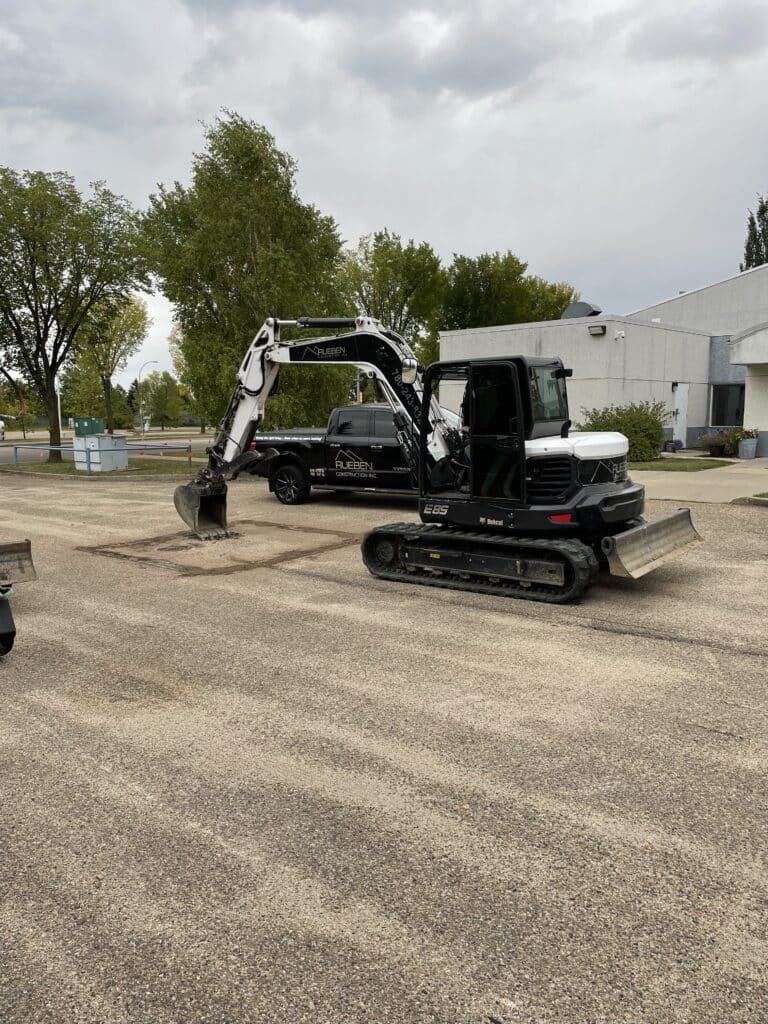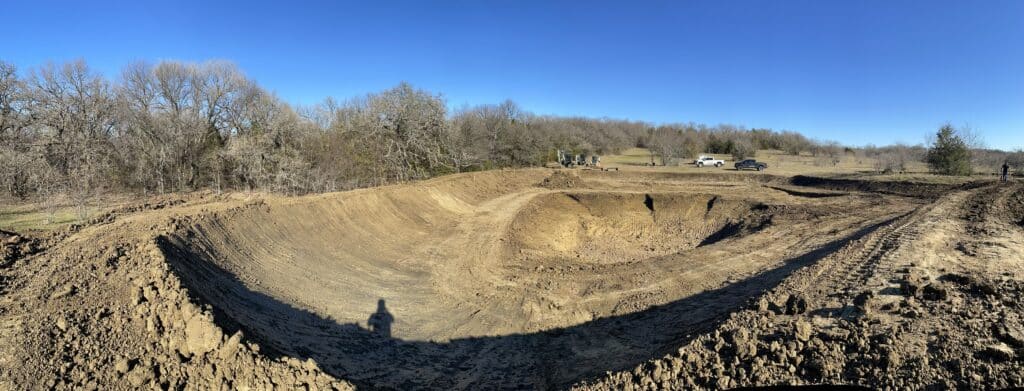Commercial Excavation Services in Dallas, TX & Surrounding Areas
Rueben Group Excavation

General Excavation Dallas-Fort Worth
Rueben Group is a leading excavation and construction company in Princeton, Texas. We Service Collin County, DFW Metroplex and all surrounding areas. We have the knowledge and expertise to handle any excavation project including but not limited too Pool excavation, Pond Excavation, Utility trenching, Moisture conditioning, Cut and Fill excavation, Driveways, culverts Storm water retention and much more. If you are needing to move dirt we have the ability to do it, reach out and see how we can be of service to you!
What to Expect with Our Excavation Services
When it comes to commercial excavation, there are a few things you can expect from Rueben Group. First and foremost, we offer quick turn arounds on take offs and estimates, we are not afraid to offer insight and ask for clarification when needed, to ensure you, as the client, gets an all encompassed quote. When it comes time to break ground we live and die by our schedule, when we tell you we will be there to start, we mean it, punctuality and accountability are the bedrock of any solid relationship. Ultimately our goal is to solve your problems and make your life easy, sometimes that means referring you to someone else who can better serve you. At the end of the day, for us, its always about what’s best for the customer!


Why Excavation Matters
There are many reasons why excavation may be necessary:
- To make way for the construction of new buildings or other structures
- To prepare the site for the installation of utilities or other infrastructure
- To remove debris or other materials that may be in the way of the proposed development
- To excavate an area for mining or other commercial activities
- To excavate a hole for an in-ground pool
The Perfect Partner for your next excavation project
Whatever the reason for the excavating Rueben Excavation is the company to call. We have the experience and expertise to get the job done right. On time, and on budget. Contact us today for a free consultation!
Rueben Group FAQ
In the city of Dallas, the process for demolishing a house is as follows; firstly, you as the homeowner will need to apply for a Master permit for demolition, the city will need to know who is completing the demolition. You should have the home tested for hazardous materials such as asbestos. Once this is completed and a demolition contractor has been retained the next step is to apply for a utility disconnect, a permit is required in order to have the power and gas disconnected from the property. At this point the home is ready to be demolished. It is a great idea to contact a non-profit organization such as habitat for humanity and allow them to remove any items of value such as doors, hardware and kitchens from the home to be sold or used, doing so can also reduce your tax liability. Once the home has been stripped of valuables the demolition contractor will generally use an excavator to tear the home down, forcing all the debris into the basement with the machine and then loading all the debris out into garbage bins to be hauled away to the landfill to be sorted and disposed of. Once completed the lot can be prepared for the new construction project.
Pipe bursting is a method that can be used to replace a sewer line. The process is simple in theory, an access pit is dug either in your basement or outside your home to reach the sewage line. Another pit is excavated at the city connection point for your home. The existing pipe is then cut and removed at each end. A steel cable is then fed into the pipe from one end and a coned cutting head is then pulled through the old line with a hydraulic puller. The steel cable is then re-fed through the old pipe where a larger head is then attached. On the other side of this head the new seamless plastic pipe is attached and then it is all pulled into place at once. Once pulled though the old line the new pipe is connected on both ends, the holes are backfilled, and you are now up and running with a new sewer line.
There is no one answer fits all, it is always dependent on the condition of your existing line and the number of obstacles present on your property. If your existing line runs under a structure such as a deck or garage of expensive landscaping then pipe bursting will generally be the best option. If your line does not run under any structures then it depends on the condition of your existing line. If you have any long sags in the line or if it is already collapsed then pipe bursting may not be the best option, even though it is less invasive it is not always the best method to replace your sewer line.
Generally, for most residential lines it is a 2-day process from start to finish. You can expect to be without water and sewer services for 4-5 hours total from start to finish.
Yes, you need a permit in order to replace a sewer line in the state of Texas, In some cases small repairs may be completed without one however most work will require a permit in order to be properly completed.
In Dallas underground utilities need to be installed by a bonded utility contractor, or in some cases a master plumber is able to pull a permit in order to install them. If you need more information, we would be happy to answer any questions you may have.
Electrical duct banks are an important part of a site’s underground infrastructure and are precast concrete conduits that protect underground electrical power lines and other important underground cabling. In a duct bank, data and electrical cables are laid out within PVC conduits that are bundled together.
By installing an electrical duct bank, a landowner, in the future, can then add additional underground power lines and other cabling without having to re-dig the original trench when there underground cabling or power lines were laid. New power lines can then be fed through the duct bank at any time in the future, and continue to be completely protected, which is a better solution than just burying electrical wires.
If you are planning future development on property that you own or lease, and you are unsure as to how much power or wiring that site might require in the future, then you may want to consider installing an underground electrical duct bank. Electrical duct banks help landowners by making future construction projects easier and simpler since you don’t have to re-excavate the entire trench when adding new underground power lines or cabling and may enhance the value of the property in the future.
The installation of electrical duct banks is also common in projects where you need to install cabling underneath roads, parking lots and other areas that have existing structures.
A duct bank is two or more ducts or conduits used as a part of a system. A duct bank is designed to protect and group or consolidate data and electrical cables to and from a building.
Soil moisture conditioning refers to the process of preparing the soil for construction of a structure or slab. This is achieved by either reducing or increasing the moisture content of the soil to a pre-determined level in order to prevent unstable soil conditions from developing below the structure.
The process to moisture condition soil in North Texas is relatively simple although it is not overly easy, the area to be conditioned is over excavated down to the required depth the excavated material is then saturated with water until the desired moisture content is reached at which point it is re-installed and compacted in lifts in its original position, once completed the soil is typically covered with poly and then capped with 12 inches of either select fill or flex base.

